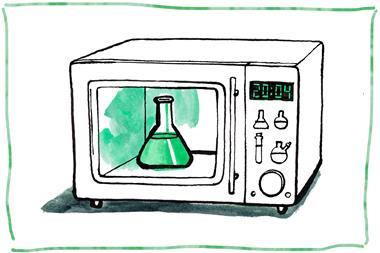A technique using structural colour liquids could help identify when medicines have been exposed to damaging temperatures.
Many medicines must be stored and transported at specific temperatures to avoid degradation. Monitoring the integrity of the cold chain during storage and distribution is therefore vital to ensure that medicines are effective. Electronic time-temperature indicators (TTIs) are currently used for this purpose but this generates a significant amount of electronic waste. Other, material-based TTIs have been developed using colour-changing reactions or dyes, but these eventually fade or are only effective above freezing temperatures.

To tackle these issues, researchers have developed a system based on the structural colour produced by photonic crystals. The device is composed of microcrystals of silicon dioxide nanoparticles dispersed in glycerol, which appear green or red depending on the size of the microcrystals. This coloured core is surrounded by a ‘temperature trigger agent’ – a mix of polyethylene glycol (PEG) and ethylene glycol (EG) in water, with the PEG/EG ratio tuned to melt at a target temperature.
When the device is exposed to temperatures above the target temperature, the trigger agent melts and diffuses into the nanoparticle suspension, breaking apart the microcrystals and causing irreversible colour loss.
The SCL technique had high flexibility and superior reliability in time-temperature indicating, including colour stability of four months, a wide target temperature range of between -70°C to +37°C and a time window for the colour change that could be tuned from minutes to days.
The researchers also showed that the SCLs could be conveniently packaged into labels or QR codes.
References
Huang C, et al. ACS Nano, 2023, DOI: 10.1021/acsnano.3c00467.

















No comments yet